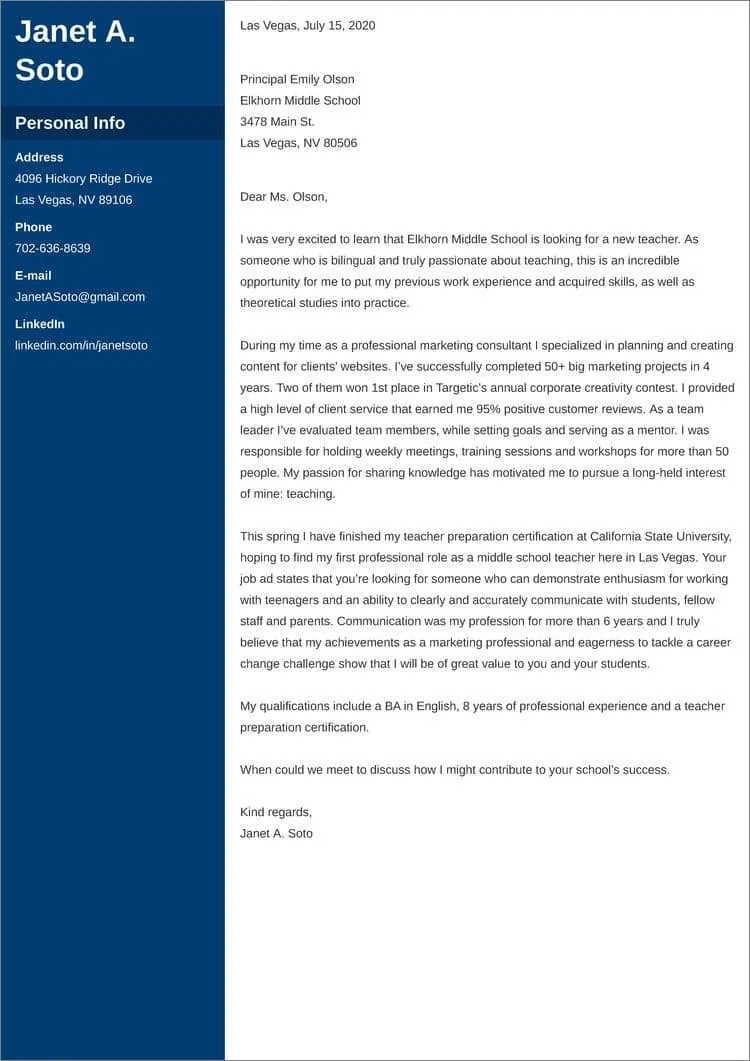Embarking on a career change is an exciting yet challenging endeavor. While your resume provides a snapshot of your experience, a well-crafted cover letter serves as your personal introduction, allowing you to articulate your story, demonstrate your passion for the new field, and persuade potential employers why you’re the right fit, even with a non-traditional background. This guide provides five essential tips to help career changers create compelling cover letters that highlight their strengths and increase their chances of landing their dream job.
Why a Cover Letter is Crucial for Career Changers
For individuals seeking a career change, a cover letter is not merely a formality, but a strategic tool. It provides the opportunity to address the elephant in the room — the shift in career paths. It allows you to explain your motivations, showcase your transferable skills, and demonstrate how your past experiences are relevant to your desired role. A strong cover letter can bridge the gap between your previous career and your new aspirations, convincing employers to look beyond the mismatch in job titles and focus on your potential. A well-written cover letter can also help overcome any hesitations an employer might have about your career change, providing context and clarity that a resume alone cannot.
Highlighting Transferable Skills
One of the most critical aspects of a career change cover letter is emphasizing your transferable skills. These are the abilities and qualities you’ve developed in previous roles that are applicable to the new position. Recognizing and highlighting these skills is crucial to demonstrating your value and potential to a new employer. Identifying these skills is the first step to writing a compelling cover letter.
Identifying Your Key Skills
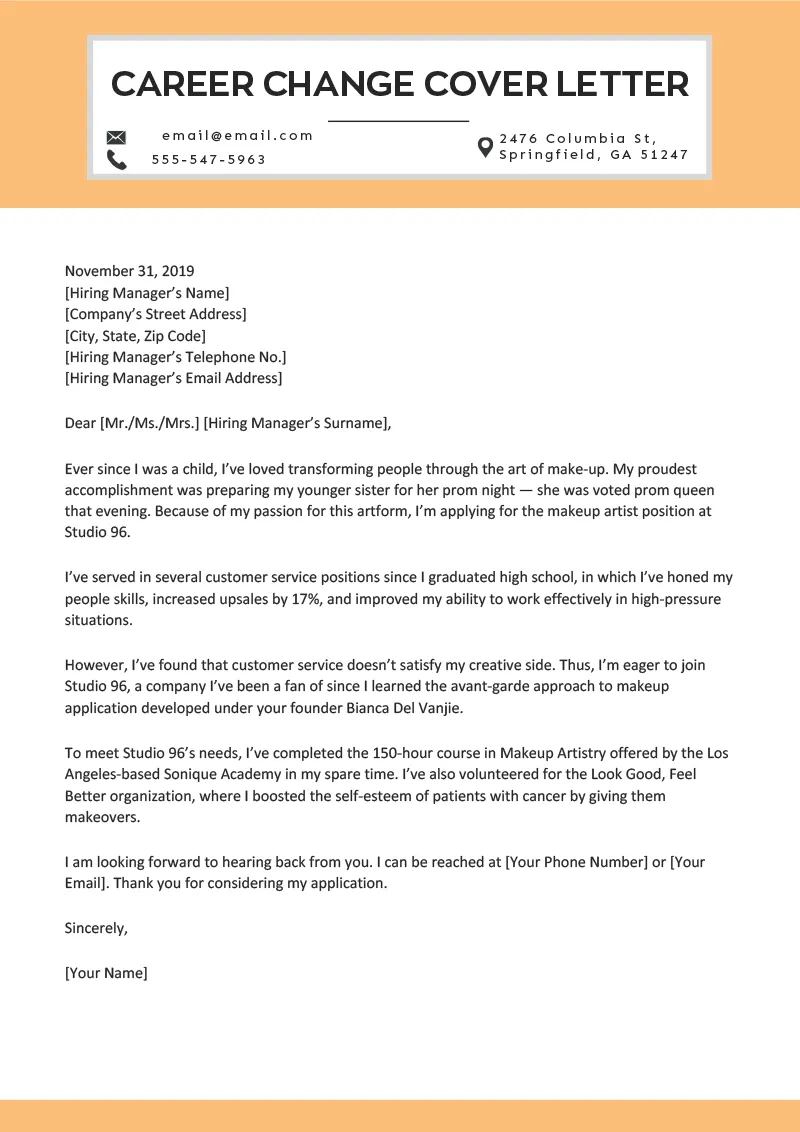
Begin by carefully reviewing the job description. Identify the key skills and qualifications the employer is seeking. Next, reflect on your past experiences, both professional and personal. What skills did you use regularly? Think about skills such as communication, problem-solving, leadership, project management, or technical proficiency. Make a list of skills that align with the job description and that you can genuinely demonstrate. This will form the foundation of your cover letter and help you write a compelling case.
Showcasing Accomplishments
Instead of simply listing skills, provide examples of how you’ve utilized them to achieve results. Use the STAR method (Situation, Task, Action, Result) to structure your examples. For instance, if the job description emphasizes communication, describe a situation where you successfully communicated a complex idea, the task you were assigned, the specific actions you took, and the positive outcome you achieved. Quantify your accomplishments whenever possible. Did your communication efforts lead to increased sales, improved team performance, or more effective project outcomes? These quantifiable results add weight to your claims and demonstrate your value.
Addressing the Career Change
Don’t shy away from the fact that you’re changing careers. Instead, address it directly and proactively. This shows confidence and self-awareness. The key is to frame your career change in a positive light, focusing on your motivations and your genuine interest in the new field. Explain your reasons for the shift and highlight what excites you about the new opportunity.
Explaining the ‘Why’
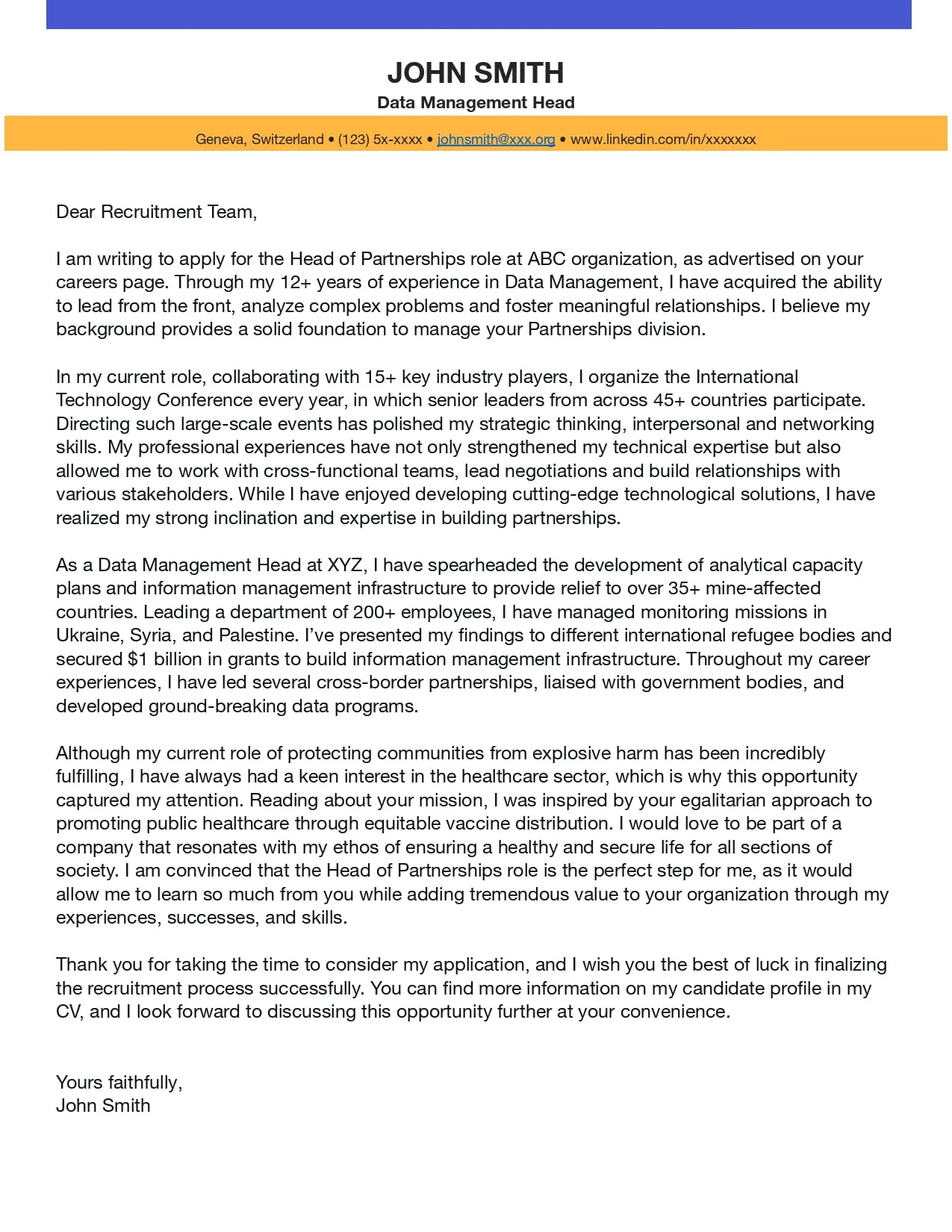
Clearly articulate why you’re making a career change. What draws you to this new field or role? Are you seeking more challenging work, a better work-life balance, or the opportunity to pursue a long-held passion? Be honest and specific. For example, instead of saying “I want a more fulfilling career,” you could say, “After years in finance, I’m eager to leverage my analytical skills in the field of data science because I’m passionate about using data to drive meaningful insights.” This level of detail demonstrates genuine interest and provides context for your career shift.
Connecting Past Experiences to New Role
Connect your previous experiences to the new role. How do your past skills and experiences make you a good fit? For instance, if you’re transitioning from teaching to project management, emphasize your organizational skills, your ability to manage deadlines, and your experience leading and motivating teams. If you’re moving from marketing to sales, highlight your communication skills, your understanding of customer needs, and your ability to build relationships. By drawing these connections, you demonstrate that your previous experiences, though seemingly unrelated, have equipped you with the skills and qualities necessary for success in your new career.
Formatting and Structure
A well-formatted cover letter is easy to read and professional in appearance. Stick to a standard business letter format. Use a clear, legible font like Arial or Times New Roman, and maintain a consistent font size (usually 11 or 12 points). Keep your letter concise, ideally one page in length. Break up large blocks of text with paragraphs and bullet points to improve readability. The overall appearance of your cover letter reflects your attention to detail and professionalism.
Header and Contact Information
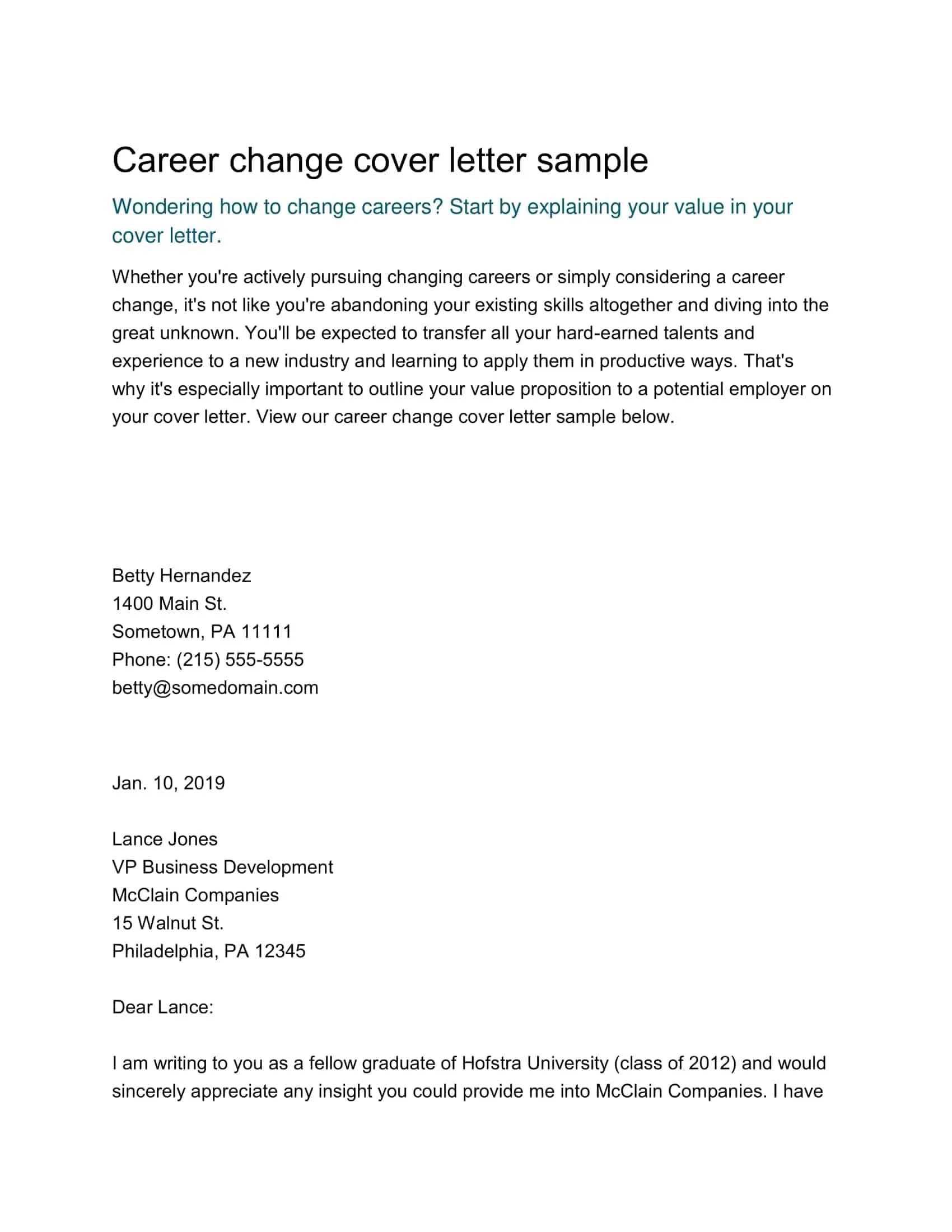
Start with your name, address, phone number, and email address. Include the date, and the hiring manager’s name and title (if known), and the company’s name and address. If you can’t find the hiring manager’s name, use a general salutation like “Dear Hiring Manager” or “Dear [Department] Team.”
Body Paragraphs
The body of your letter is where you make your case. Start with a strong opening paragraph that states your intention and grabs the reader’s attention. Then, delve into your transferable skills, showcasing your accomplishments with specific examples. Address your career change and explain your motivations. Highlight how your previous experiences align with the job requirements. Use the STAR method to structure your examples, and quantify your results whenever possible. Keep your paragraphs concise and focused on the most relevant information.
Closing the Letter
Conclude your cover letter with a strong closing paragraph. Reiterate your interest in the position and your enthusiasm for the company. Thank the reader for their time and consideration. Include a call to action, such as “I look forward to the opportunity to discuss my qualifications further in an interview.” End with a professional closing, such as “Sincerely” or “Best regards,” followed by your typed name.
Tailoring the Cover Letter
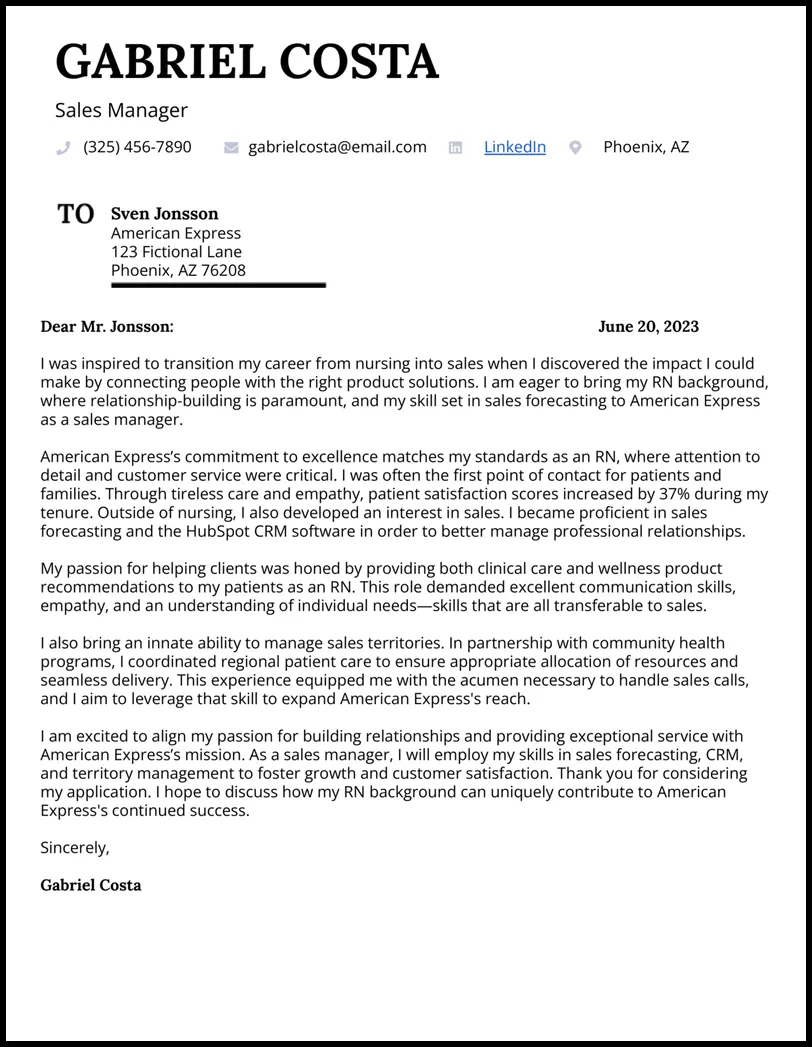
A generic cover letter won’t impress employers. Customize each cover letter to the specific job and company you’re applying to. This requires thorough research and a careful review of the job description. Demonstrate that you’ve taken the time to understand the company’s needs and that you’re genuinely interested in the opportunity.
Researching the Company
Before writing your cover letter, research the company thoroughly. Visit their website, read their mission statement, and browse their social media profiles. Understand their products or services, their values, and their culture. This research will help you tailor your cover letter to their specific needs and demonstrate your genuine interest. Show that you’ve taken the time to learn about the company, and you’re not just sending out a generic application.
Matching Skills to the Job Description
Carefully review the job description and identify the key requirements. Then, tailor your cover letter to highlight the skills and experiences that match those requirements. Use keywords from the job description in your letter, but avoid simply repeating the same phrases. Instead, integrate those keywords naturally into your descriptions of your skills and accomplishments. This shows that you understand the job requirements and that you’re the right fit for the role.
Proofreading and Editing
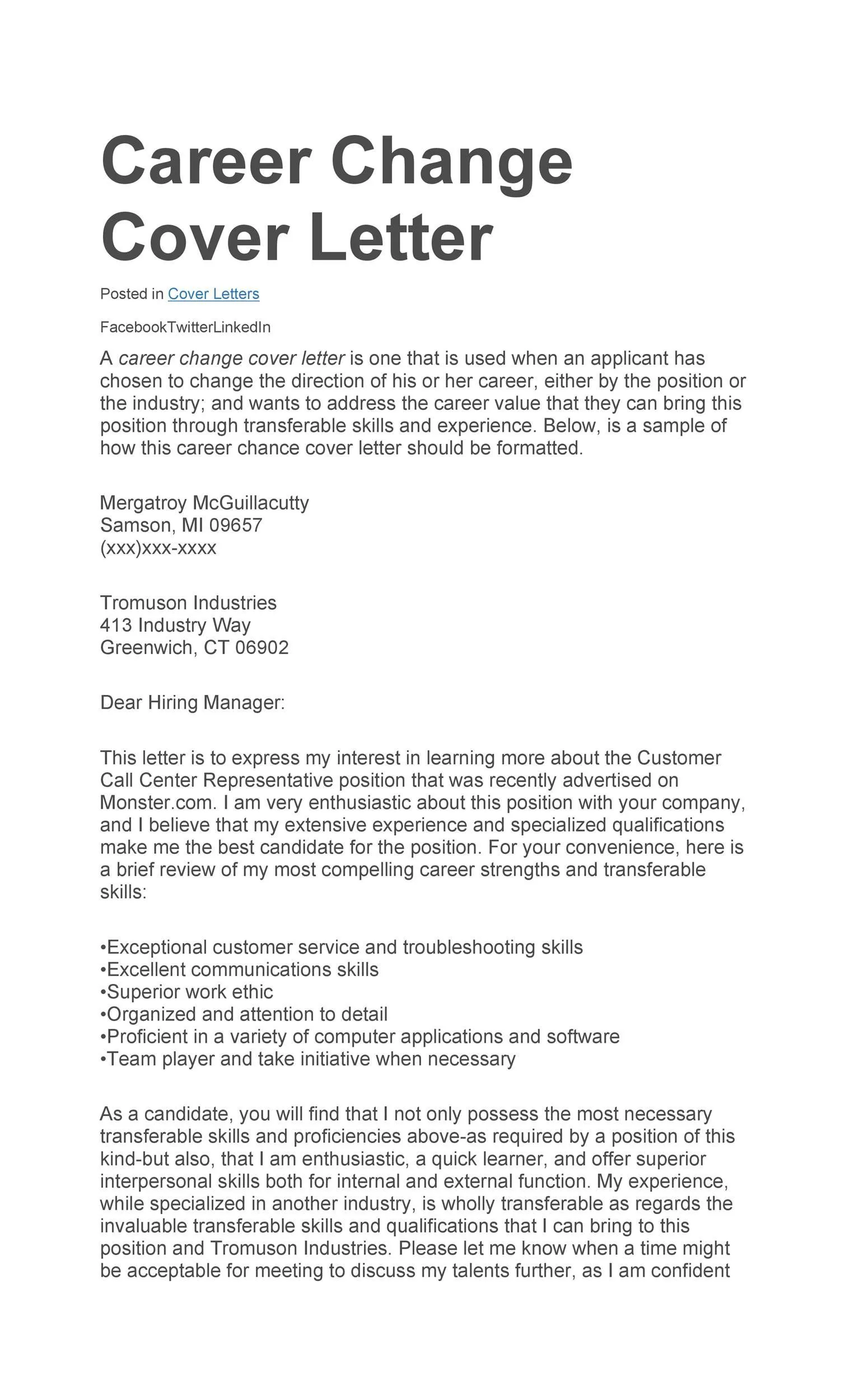
Before sending your cover letter, proofread it carefully. Errors in grammar, spelling, and punctuation can damage your credibility. Read your letter aloud to catch any awkward phrasing or mistakes. Ask a friend or family member to review it as well. A fresh pair of eyes can often spot errors you might miss. Ensuring your cover letter is polished and error-free demonstrates your attention to detail and professionalism. A perfect cover letter can make a lasting impression.
In conclusion, writing a cover letter for a career change requires careful planning and execution. By focusing on transferable skills, addressing the career change head-on, and tailoring your letter to each job, you can significantly increase your chances of success. A well-crafted cover letter is your opportunity to showcase your value, explain your motivations, and persuade employers to give you a chance to excel in your new career. Apply these five tips and you’ll be well on your way to writing a cover letter that gets you noticed.
